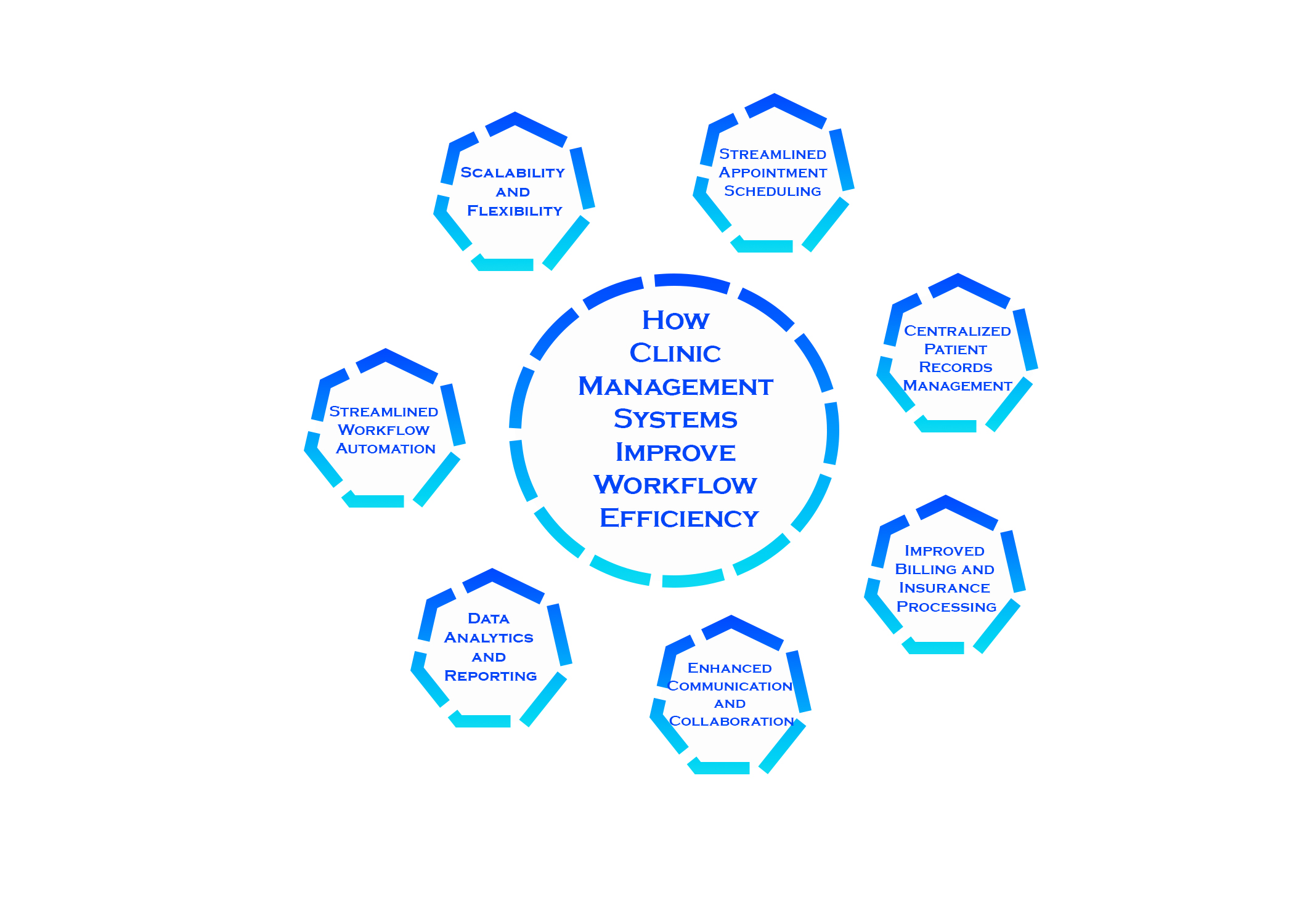In today’s fast-paced healthcare environment, clinics face numerous challenges in managing patient care, administrative tasks, and operational efficiency. The rise of technology has brought innovative solutions to these challenges, and one of the most effective tools is the clinic management system (CMS). A CMS integrates various functions of clinic operations into a single platform, leading to enhanced workflow efficiency. This blog explores how clinic management systems improve workflow efficiency across different aspects of healthcare operations.

1. Streamlined Appointment Scheduling
One of the most time-consuming tasks in any clinic is managing appointments. Traditional scheduling methods often lead to double bookings, missed appointments, and communication errors. clinic management systems offer streamlined appointment scheduling features that allow staff to manage patient appointments efficiently.
With a CMS, clinics can provide online booking options, enabling patients to schedule, reschedule, or cancel appointments at their convenience. Automated reminders can be sent via email or SMS, significantly reducing the number of no-shows. By optimizing appointment scheduling, clinics can enhance patient satisfaction while maximizing the use of available resources.
2. Centralized Patient Records Management
Managing patient records is critical for providing quality care, but it can be a daunting task when using paper-based systems or disjointed digital solutions. A clinic management system centralizes patient information, allowing healthcare providers to access complete and up-to-date records from a single platform.
With features like electronic health records (EHR), clinics can easily document patient interactions, treatment plans, and medical history. This centralization not only improves data accuracy but also enhances collaboration among healthcare providers. When everyone has access to the same information, the risk of errors decreases, and care coordination improves, leading to better patient outcomes.
3. Improved Billing and Insurance Processing
Billing and insurance claims can be a significant source of frustration for clinics. Inaccurate billing can lead to delayed payments and dissatisfied patients. Clinic management systems streamline the billing process by automating invoice generation, payment tracking, and claims submission.
With integrated billing features, clinics can ensure accurate coding and timely submission of claims to insurance providers. Automated reminders for unpaid invoices help clinics maintain cash flow and reduce the time spent on collections. By simplifying billing and insurance processes, clinic management systems free up staff time and reduce administrative burdens, allowing them to focus on patient care.
4. Enhanced Communication and Collaboration
Effective communication is vital in a clinical setting, yet it can often be hindered by outdated systems. A CMS improves communication among staff, patients, and external partners through various built-in tools.
For example, secure messaging features allow healthcare providers to communicate with each other and share patient information quickly and safely. Patient portals enable patients to access their records, request prescription refills, and communicate with providers. By fostering open lines of communication, clinic management systems ensure that everyone is informed and engaged in the patient’s care process.
5. Data Analytics and Reporting
Data analytics is essential for clinics to measure performance, identify trends, and make informed decisions. Clinic management systems come equipped with reporting tools that provide valuable insights into various aspects of operations, such as patient volume, revenue cycles, and appointment trends.
By analyzing data, clinics can identify areas for improvement, optimize staffing, and enhance service delivery. For instance, if data reveals a high rate of no-shows on specific days, clinics can adjust their scheduling practices accordingly. Ultimately, data-driven decision-making leads to improved operational efficiency and better patient care.
6. Streamlined Workflow Automation
Clinic management systems can automate various administrative tasks, significantly improving workflow efficiency. From appointment reminders to patient check-in processes, automation reduces the manual workload on staff.
For example, automated check-in features allow patients to confirm their arrival via the patient portal or through a kiosk, minimizing wait times and streamlining the intake process. Staff can focus on more critical tasks, such as providing care and addressing patient needs, rather than spending time on repetitive administrative duties.
7. Scalability and Flexibility
As clinics grow and evolve, their operational needs change. Clinic management system are designed to be scalable and flexible, accommodating the needs of clinics of all sizes. Whether a clinic is expanding its services, adding new providers, or incorporating telehealth, a CMS can adapt to these changes without disrupting workflow.
This scalability ensures that clinics can maintain efficiency as they grow, avoiding the pitfalls of outdated systems that may struggle to keep pace with increased demand.
Conclusion
Clinic management systems play a crucial role in improving workflow efficiency in healthcare settings. By streamlining appointment scheduling, centralizing patient records, automating billing processes, enhancing communication, and leveraging data analytics, these systems empower clinics to operate more efficiently and effectively. As healthcare continues to evolve, investing in a robust clinic management system is essential for clinics seeking to provide high-quality care while optimizing their operations. Embracing technology not only improves patient experiences but also positions clinics for long-term success in an increasingly competitive healthcare landscape.